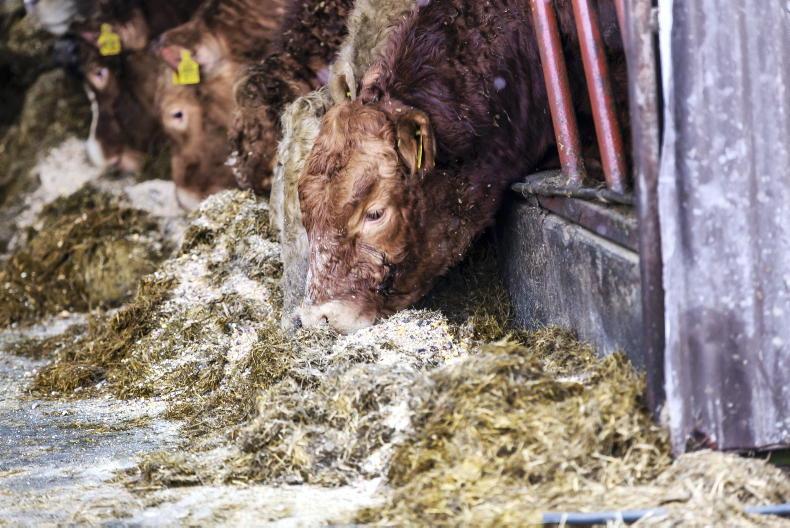Feeding meal to stores and weanlings is common once cattle are housed for winter. Most farmers will operate flat rate feeding, whereby animals get the same meal allocation every day of winter.
However, if cattle will go back to grass next spring, or maiden heifers have a target breeding weight to hit, consider front loading meal to get the best response from concentrate feeding.
Front loading meal means cattle get a bigger percentage of the meal allocation in the first half of winter.
Weanlings often have a better response to meal feeding in the weeks after housing, compared to meal fed three to four months after coming indoors.
With front loading concentrate, the same quantity of meal is fed over winter. It is just divided out differently.
How it works
As an example, take store cattle normally fed a flat rate of 2kg/day for 150 days over winter. The total meal consumed by stores is 300kg/head.
With front loading, offer 3kg/day for the first 75 days in the shed, then reduce to 1kg/day for the next 75 days. Cattle still consume 300kg/head.
Advantages
Younger cattle are more efficient at converting feed and tend to have a better response to meal fed shortly after housing compared to three to four months down the line.
This can help keep weanlings and maiden heifers on track to hit any target weights for breeding or sale next spring.
Weigh animals in mid-winter to check weight gain, then decide when or if meal levels should be reduced for these animals.
As meal levels are reduced in the second half of winter, stores are less likely to be overfat as they go out to grass next spring.
Read more
Feeding the freshly calved cow this winter
Five field maintenance jobs as grazing season ends
Feeding meal to stores and weanlings is common once cattle are housed for winter. Most farmers will operate flat rate feeding, whereby animals get the same meal allocation every day of winter.
However, if cattle will go back to grass next spring, or maiden heifers have a target breeding weight to hit, consider front loading meal to get the best response from concentrate feeding.
Front loading meal means cattle get a bigger percentage of the meal allocation in the first half of winter.
Weanlings often have a better response to meal feeding in the weeks after housing, compared to meal fed three to four months after coming indoors.
With front loading concentrate, the same quantity of meal is fed over winter. It is just divided out differently.
How it works
As an example, take store cattle normally fed a flat rate of 2kg/day for 150 days over winter. The total meal consumed by stores is 300kg/head.
With front loading, offer 3kg/day for the first 75 days in the shed, then reduce to 1kg/day for the next 75 days. Cattle still consume 300kg/head.
Advantages
Younger cattle are more efficient at converting feed and tend to have a better response to meal fed shortly after housing compared to three to four months down the line.
This can help keep weanlings and maiden heifers on track to hit any target weights for breeding or sale next spring.
Weigh animals in mid-winter to check weight gain, then decide when or if meal levels should be reduced for these animals.
As meal levels are reduced in the second half of winter, stores are less likely to be overfat as they go out to grass next spring.
Read more
Feeding the freshly calved cow this winter
Five field maintenance jobs as grazing season ends







 This is a subscriber-only article
This is a subscriber-only article










SHARING OPTIONS: